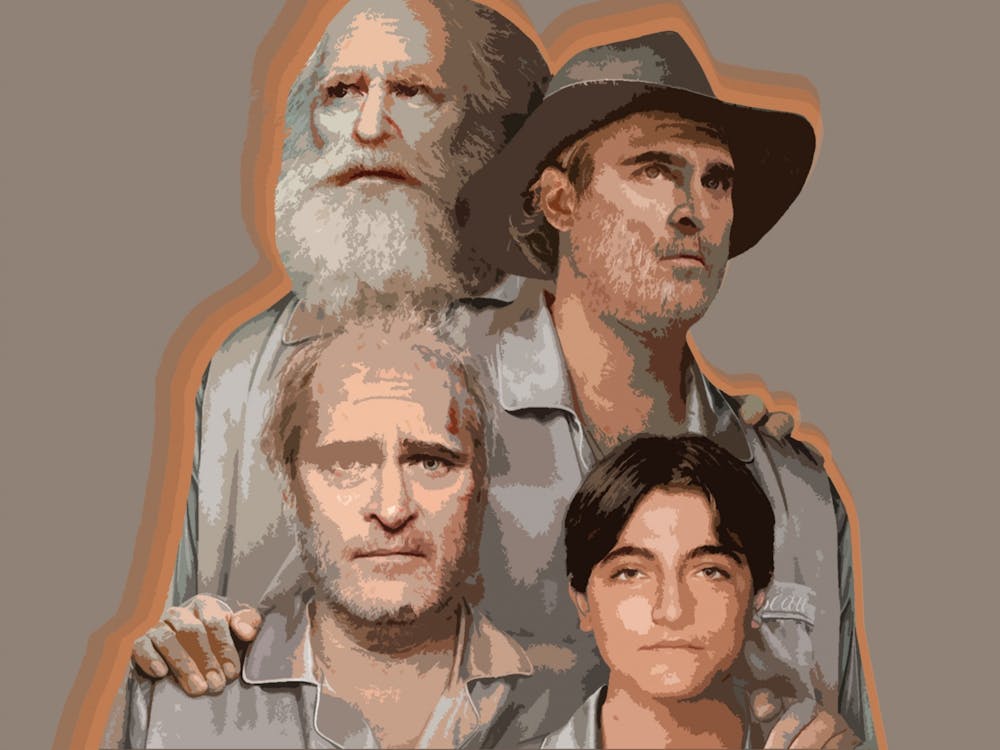Life in space is impossible.” These words appear on screen at the start of “Gravity,” the latest effort from A-list director Alfonso Cuarón (“Children of Men,” “Harry Potter and the Prisoner of Azkaban”) This simple sentence sets the tone for the rest of the film, which offers one of the best cinematic thrill rides you’re likely to see in your lifetime.
The plot is exceedingly simple; at its heart, “Gravity” is your run-of-the-mill story of survival set among the stars. Its narrative arc is completely predictable, and in typical Hollywood fashion, its characters escape danger at the last possible second. With its opening words, however, the fragility of the human body against a backdrop of a larger universe and our insignificance is something that cannot be forgotten. That the astronauts, with only their space suits to protect them, won’t end up like their colleagues once exposed to an environment devoid of life — frozen, with faces shattered and caved-in — creates a sense of nail-biting suspense and awe that pervades the film. Oddly poignant objects drift past the camera lens at select moments — a Marvin the Martian doll, a ping pong paddle, a single teardrop — against a floating Earth, and it’s these moments that present a strange juxtaposition between humanity and the cosmos.
To me, “Gravity” is not a science fiction movie. Unlike so many other science fiction thrillers that happen to take place in space, “Gravity” is not concerned with alien fights and warp speed travel. In fact, the only real threat that propels the film forward is flying space debris. As the film’s true focus, space itself is fascinating and terrifying enough to keep the movie going without threats from extraterrestrial life and the aid of futuristic toys.
Auroras travelling across Earth’s surface and the constant orbital rotation of the stars form the background against which the astronauts fight for survival. Matt Kowalski (George Clooney) takes a few moments to admire the sunrise over the Ganges during all this; it’s hard not to wonder at the beauty of the universe through it all and to feel completely insignificant when looking at Earth from afar. Comparisons to Ang Lee’s “Life of Pi” almost can’t be avoided with cinematography as spectacular as that of this film. While “Life of Pi” makes Earth beautiful, Emmanuel Lubezki, Cuarón’s regular cinematographer, makes space breathtaking in its realism.
“Gravity” is not without its flaws, however. The script and dialogue are unremarkable at best. Ryan Stone (Sandra Bullock), a first-time space traveller, is annoyingly helpless without Kowalski at the start of the movie. The side story of the death of Stone’s 4-year-old daughter is completely unnecessary and has clearly been added solely to give an emotional dimensionality to Stone’s character.
These shortcomings, however, do nothing to dent the movie’s awesomeness — a word well deserved by the film’s truly awe-inspiring and spectacular depiction of the cosmos. It certainly helps that Sandra Bullock gives one of the best physical performances I’ve ever seen by delivering essentially a one-woman show during which she twists, turns and swims to suggest a plausible environment that defy the regular laws of physics on Earth through gestures in a studio simulation. After Bullock’s character slips out of her space suit and into a oxygen-filled escape pod, the audience is given a memorable image of a sort of poetic rebirth in the amniotic fluid of our universe.
Much of the film’s strength at creating the sense of a floating camera in space lies in its adept camerawork, beginning with one of Cuarón’s trademark unbroken takes at the opening of the film. From start to finish, the shots are executed with such technical precision that shifts in perspective transition smoothly when the camera lens floats from the macroscale, where the astronauts are just miniature specks against the Earth’s horizon, to the microscale, where individual nuts and bolts from the shuttle float past the lens. The film allows the audience to float alongside the astronauts in zero-g, as the stars travel around them.
Oscar nominations for best actress, cinematography and direction are to be expected with a masterpiece like “Gravity.” I’m just sad I did not watch the film in IMAX 3D. When the struggle for life in an otherwise terrifying and unknown space of simultaneous nothingness and infiniteness is thrown at us for a solid 90 minutes, I have a newfound appreciation for a world where life is tedious, complicated, sad and comfortable, but entirely possible.






